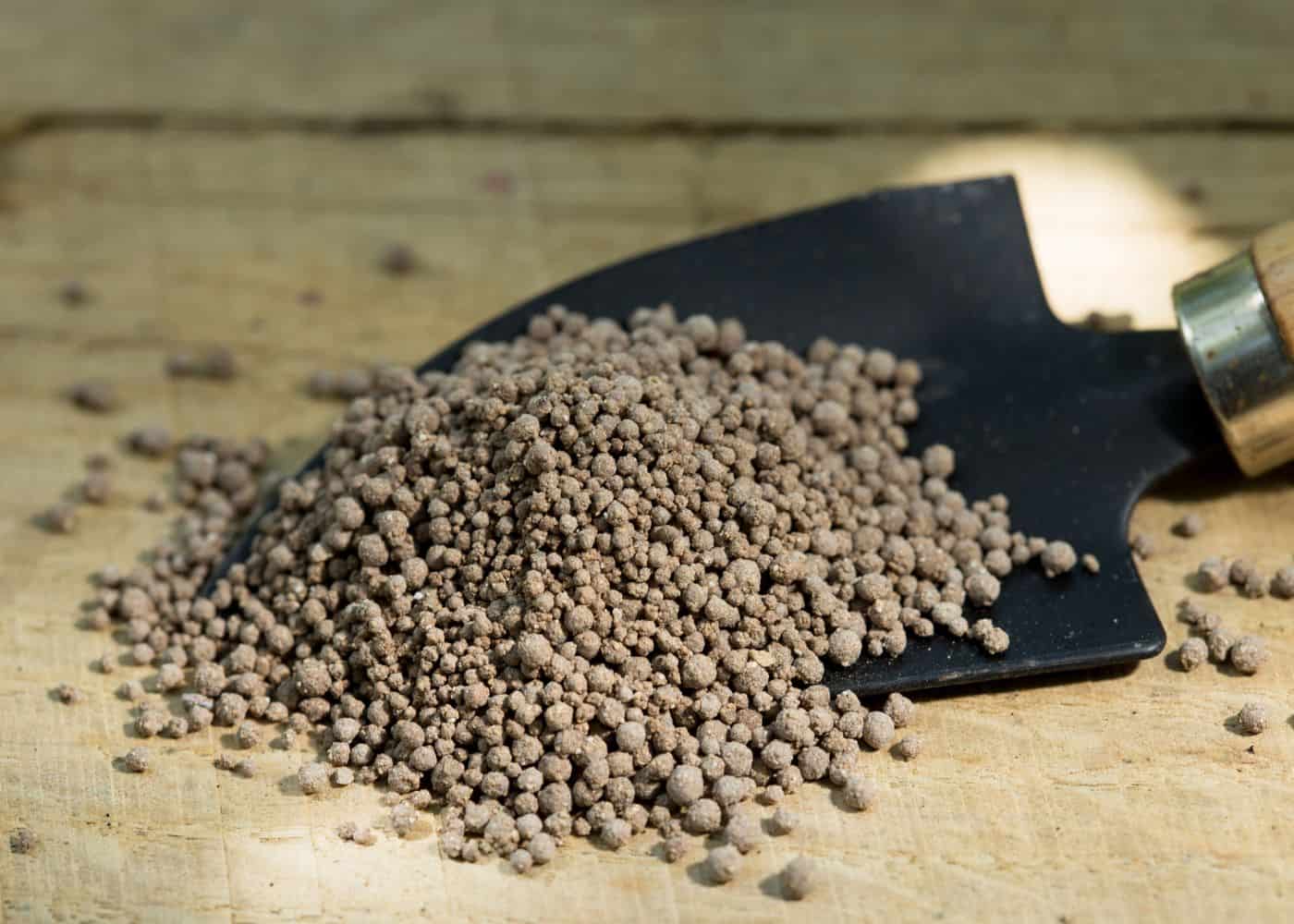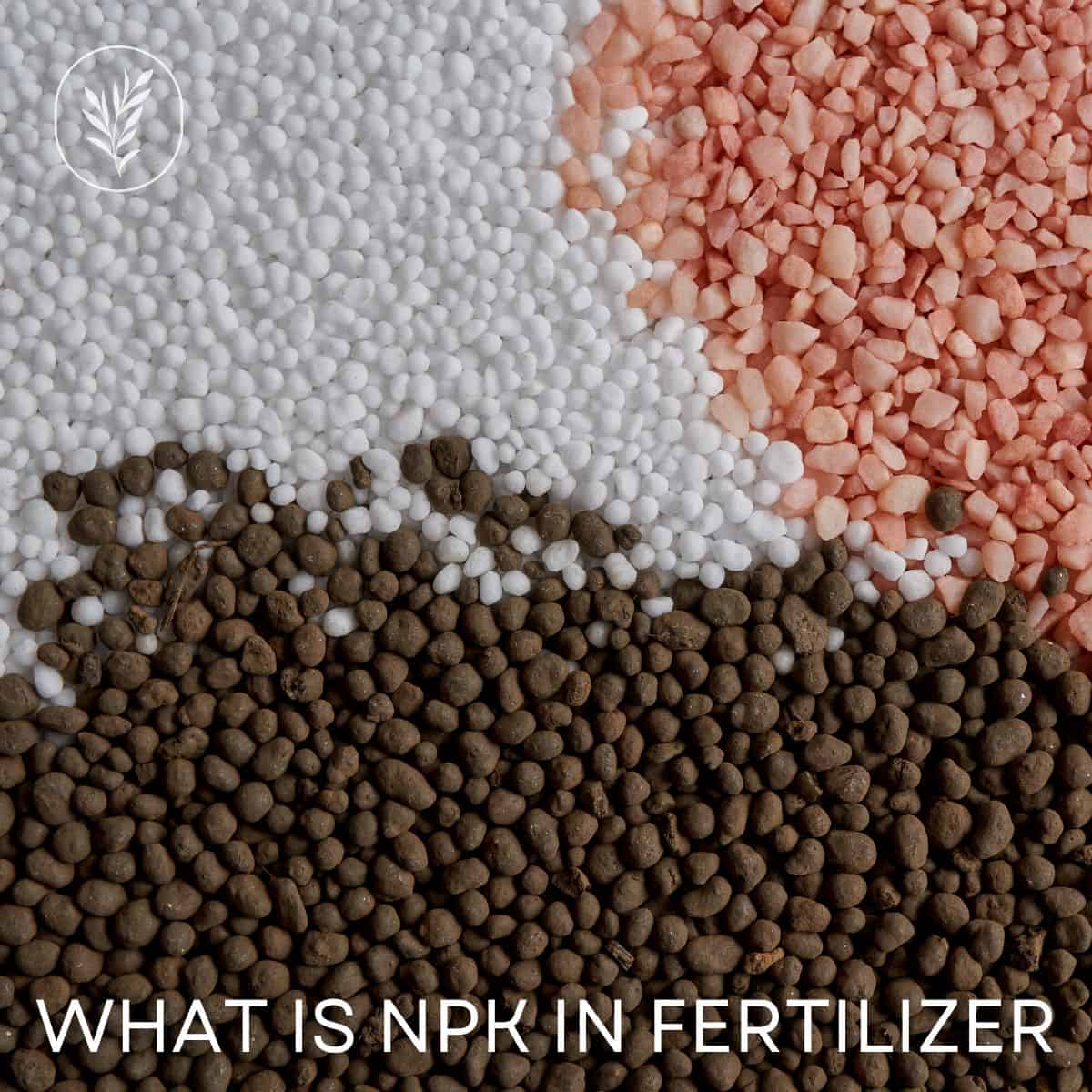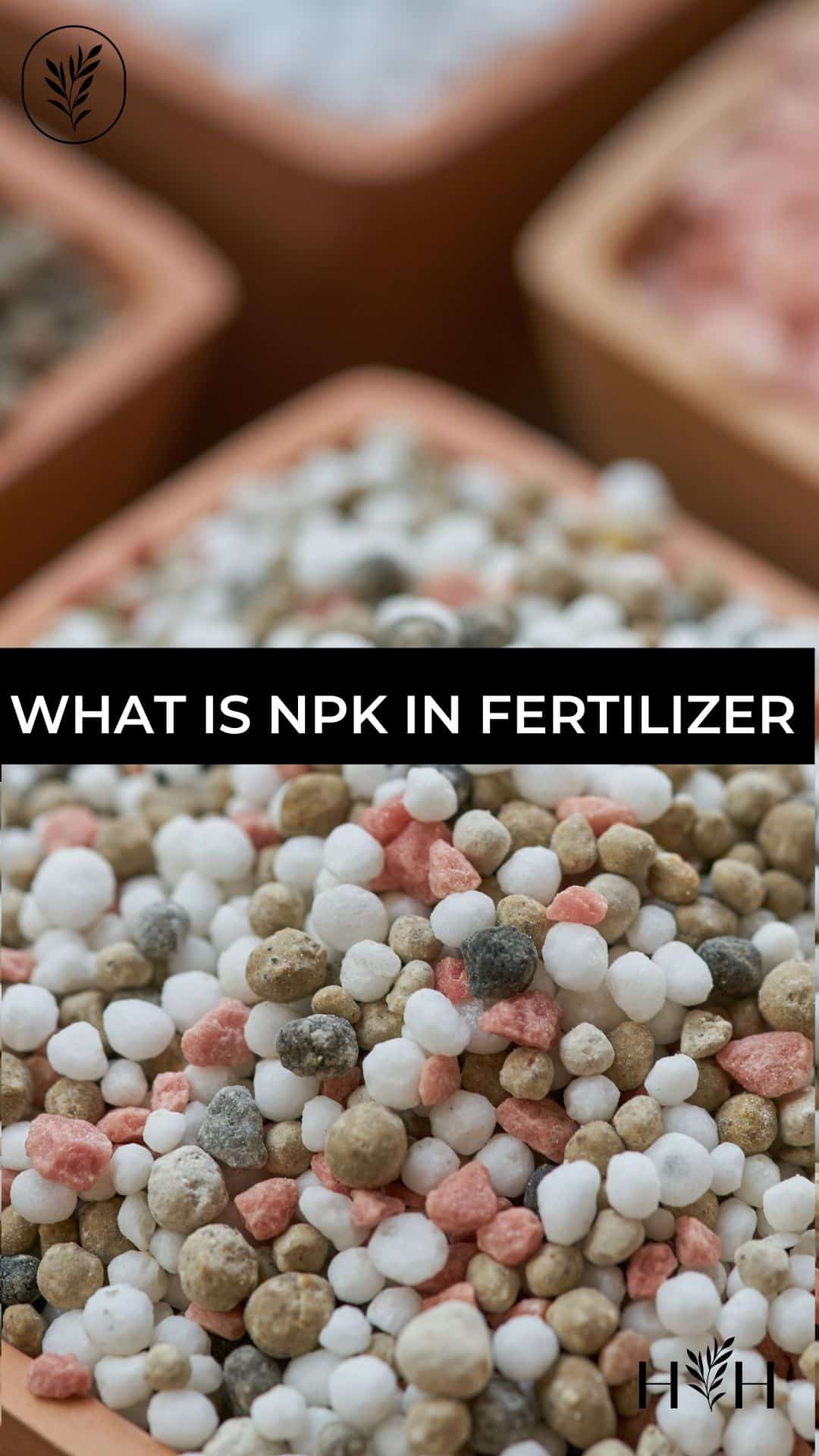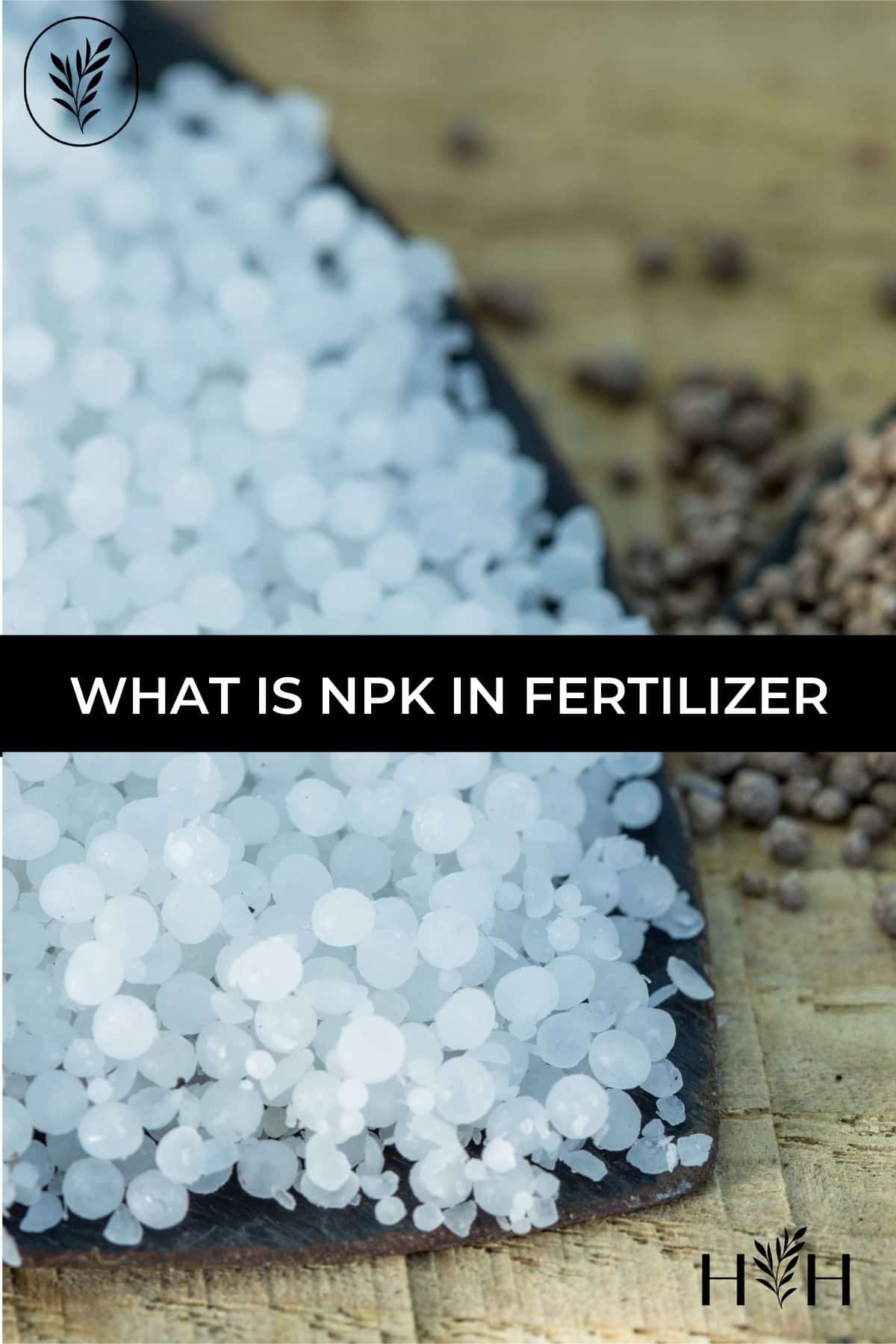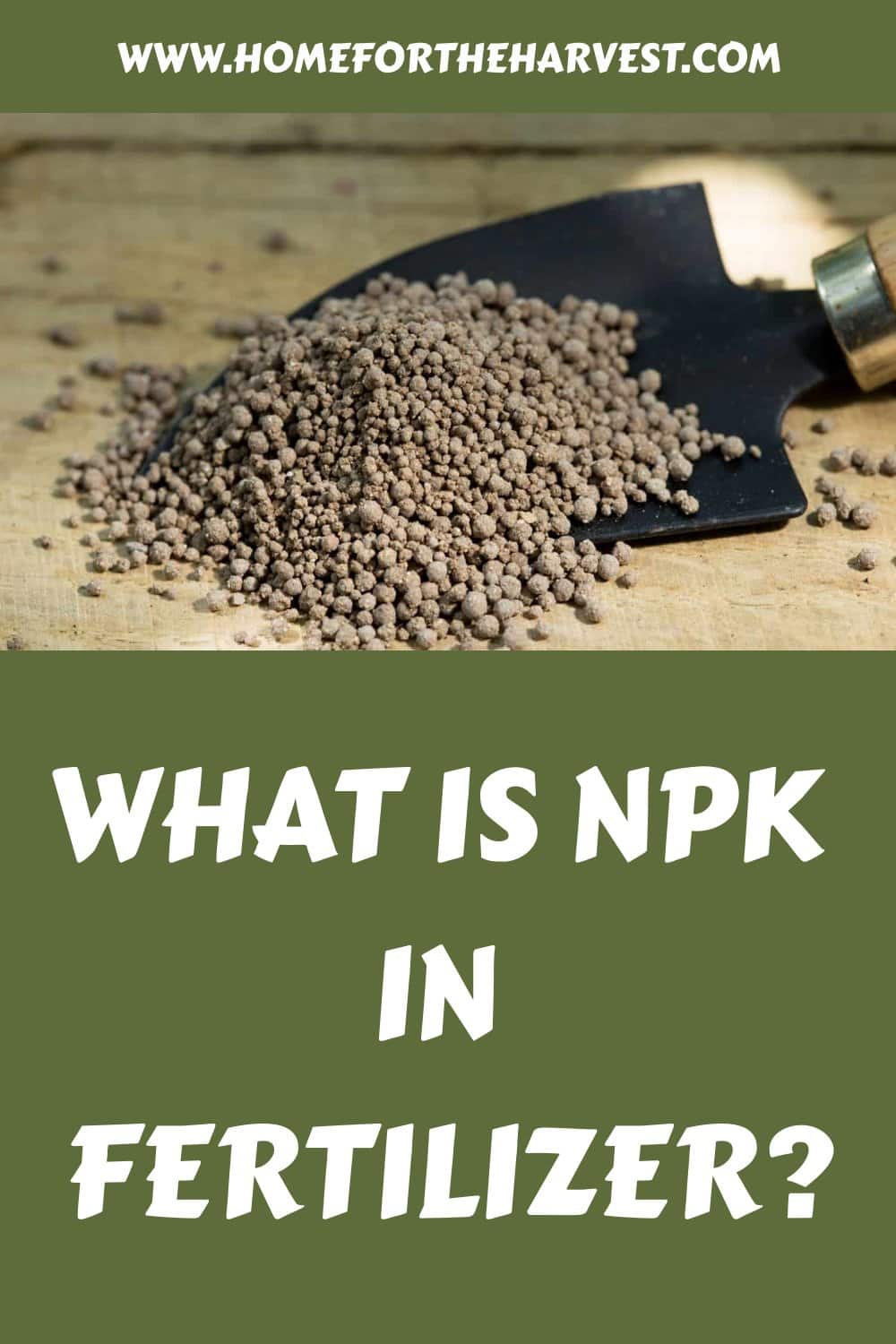In fertilizer products, NPK stands for nitrogen, phosphorus, and potassium – the three essential macronutrients plants need to thrive. These are the three most important minerals for most plants, and they form the base of any balanced fertilizer.
Nitrogen is important for healthy foliage growth and green coloration. Phosphorus helps with root development and flower production. Potassium strengthens cell walls, boosts disease resistance, and aids in photosynthesis. All three of these nutrients must be present in the right amounts for optimal plant health.
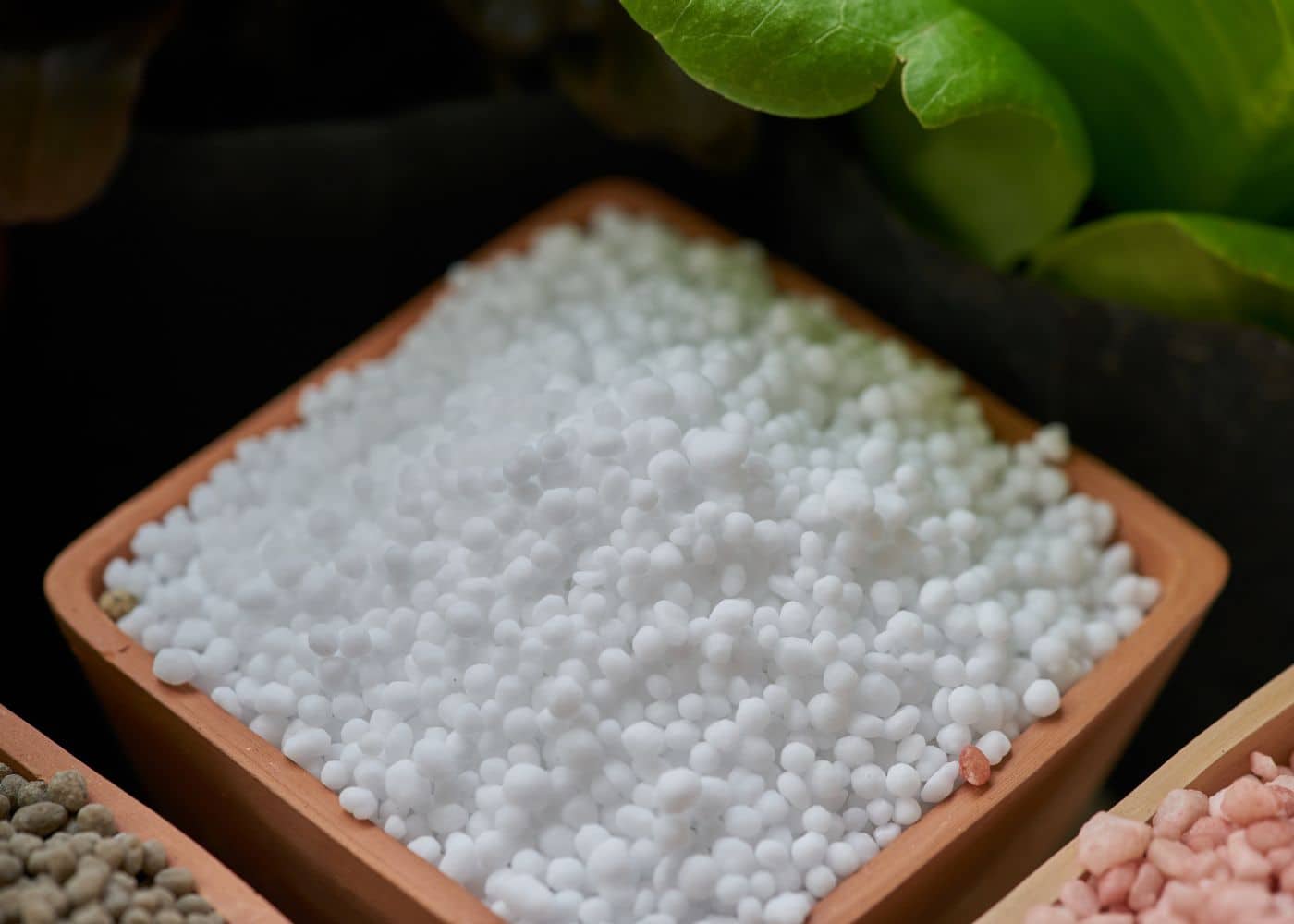
When it comes to fertilizers, NPK refers to the ratio of each nutrient contained within a product. A 10-10-10 fertilizer contains a blend of nitrogen (N), phosphorus (P), and potassium (K) in a ratio of 10% each. Different types of plants require different ratios depending on their needs at various stages of growth. Understanding what your garden requires will help you select the right type of fertilizer.
“Fertilization with nitrogen and often phosphorus and potassium (N, P, K) boosts productivity in nearly all natural and managed ecosystems.”
Mineral Nutrition of Plants: Principles and Perspectives, by Emanuel Epstein and Arnold J. Bloom
Organic fertilizers are typically lower in NPK than synthetic ones because they contain natural materials like manure or compost that break down over time into usable nutrients for plants. They also provide beneficial microorganisms that help promote soil health by breaking down organic matter into more readily available forms of nutrition for plants to absorb through their roots.
Synthetic fertilizers are usually higher in NPK but can cause damage if used incorrectly or applied too frequently as they don’t contain any beneficial microbes that naturally occur in soils from organic sources such as manure or composted leaves/grass clippings etc
By understanding NPK in fertilizer, you can make informed decisions about the best type of fertilizer for your garden. With that knowledge, we can now move on to discuss the benefits of using NPK fertilizers.
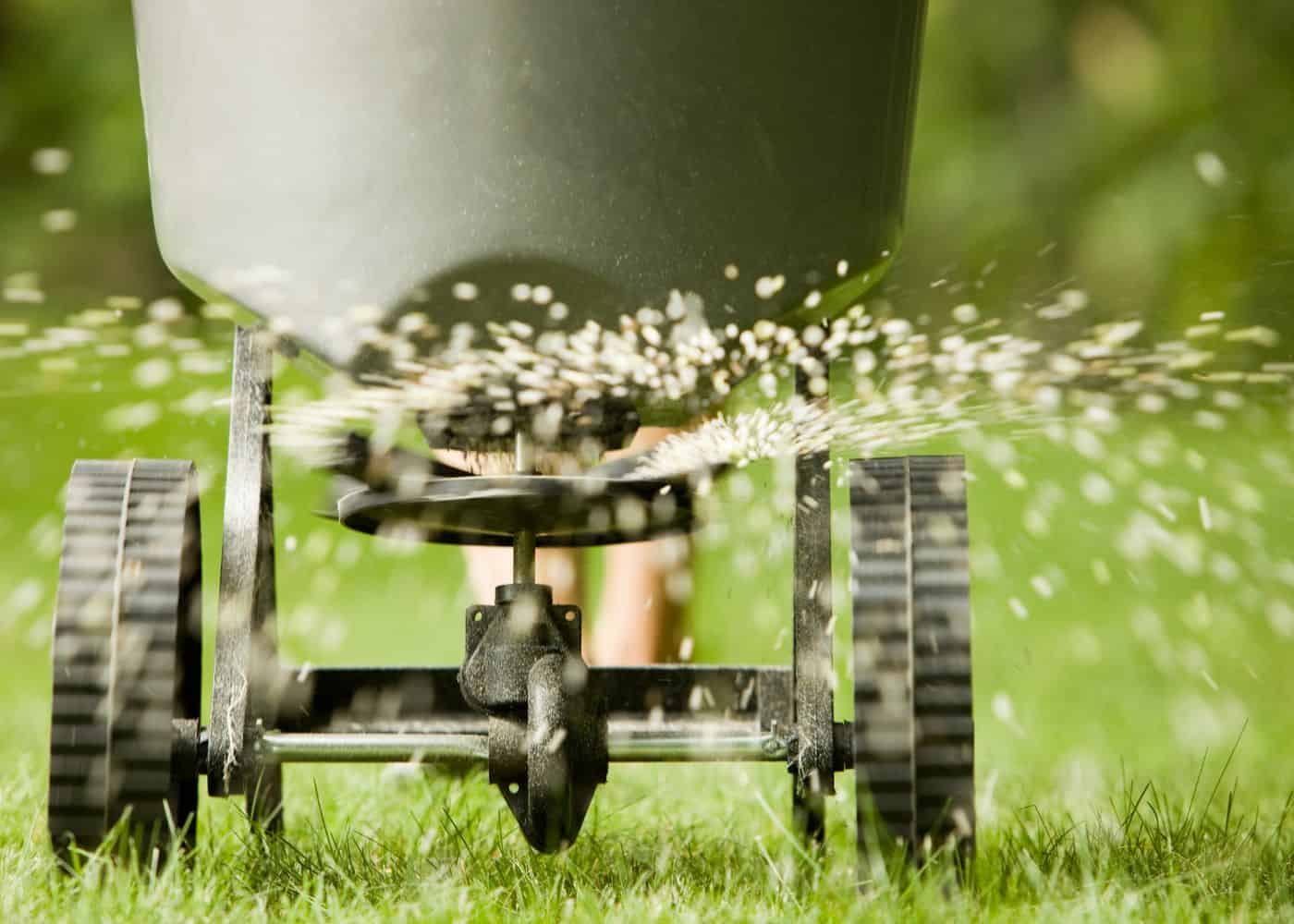
Benefits of NPK Fertilizers
Fertilizers containing NPK can be an excellent source of nourishment for plants, supplying them with the necessary elements to flourish. NPK stands for nitrogen, phosphorus, and potassium – the three primary nutrients found in fertilizer that are essential for healthy plant growth.
Nitrogen helps promote leafy green growth in plants while phosphorous encourages root development. Potassium aids with photosynthesis and water regulation within plants as well as strengthens their overall cell structure. All three combined create an ideal balance of nutrition needed by most plants during different stages of their life cycle; however, it’s important to understand which type of NPK fertilizer is best suited for what you’re growing before applying it to your soil.
If you’re growing leafy vegetables such as lettuce or spinach, then a higher nitrogen number would be beneficial, whereas if you were growing flowers, then a higher phosphorus number would be better suited since this will encourage blooming instead of foliage production. Likewise, foliage houseplants, landscaping evergreens, and lawns also are more commonly fed with high nitrogen fertilizer.
It is also important to have your soil tested prior to fertilizer application, so that any deficiencies can be addressed accordingly with specific amendments if necessary such as adding more nitrogen or phosphorous depending on results from the test report generated by professionals who specialize in soil science. This way, you will know exactly how much and when each nutrient should be applied throughout different seasons throughout the year.
“If one of the chemical elements essential to a plant is available in insufficient amounts or in chemical combinations that are poorly absorbed, the deficiency of this element will bring about derangements in plant metabolic processes. Eventually these metabolic disturbances manifest themselves in the development of visible symptoms such as stunted growth, yellowing or purpling of leaves, or other abnormalities.”
Mineral Nutrition of Plants: Principles and Perspectives, by Emanuel Epstein and Arnold J. Bloom
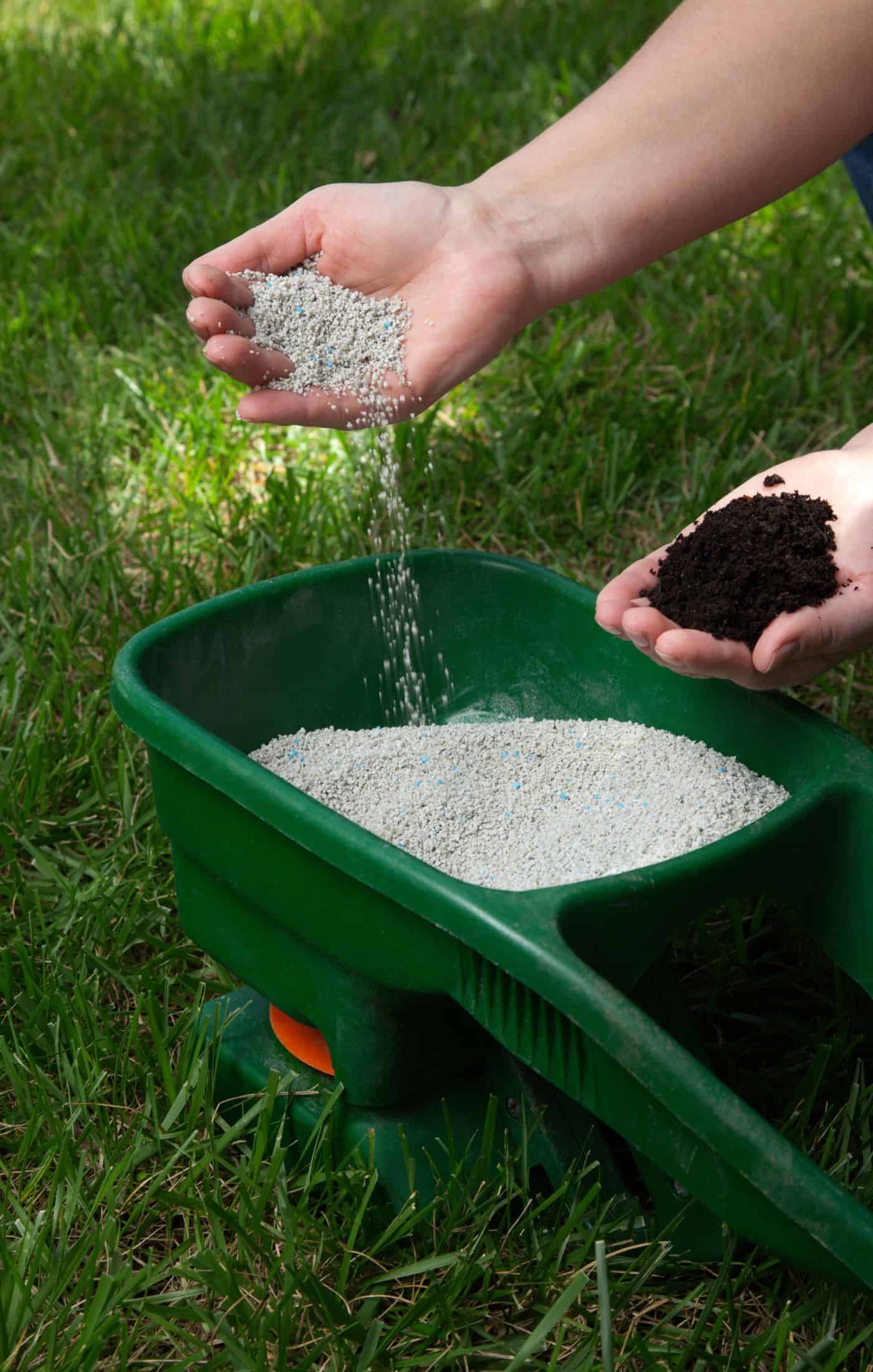
Choosing the Right NPK Fertilizer
For optimal results in your garden, it is essential to select the right fertilizer that contains nitrogen (N), phosphorus (P), and potassium (K) – commonly referred to as NPK. These elements are known as NPK. Selecting the appropriate fertilizer with the right NPK ratio is paramount to ensure optimal growth and yield.
Nitrogen helps promote healthy foliage growth, making it an excellent choice for leafy vegetables and flowering plants that need plenty of green leaves. Phosphorus encourages strong root development and promotes blooming in flowers, while potassium helps strengthen stems and improve disease resistance.
To select a fertilizer with the correct balance of NPK, you’ll first need to assess your soil’s nutrient content by having it tested at a lab or using a home testing kit. Once you know which nutrients are lacking in your soil, you can choose a fertilizer blend that will provide what’s missing without overdoing any particular element. A balanced formula containing equal amounts of each element is usually ideal if you’re unsure what fertilizer to use.
Organic fertilizers such as composted manure or fish emulsion contain all three elements but typically have lower concentrations than synthetic products do. They also release their nutrients more slowly into the soil over time instead of all at once like some chemical-based formulas do—so they may be better suited for gardens where long-term health is desired rather than quick fixes for poor soil conditions.
For those who want fast results without relying on man-made chemicals, there are liquid organic options such as seaweed extract or liquid kelp available too—these can be applied directly onto plant foliage instead of being worked into the ground like other types of fertilizers would be used If using these products make sure to read directions carefully before applying them since they can burn tender foliage if misused.
Finally, don’t forget about timing when selecting an NPK product; different formulations work best when applied during certain parts of the growing season, so make sure whatever product you choose is designed specifically for this purpose. Otherwise, it won’t deliver optimal results no matter how well-balanced its contents might be.
Choosing the right NPK fertilizer is essential to ensure healthy and vibrant plants. Applying it properly will help you achieve maximum results with minimal effort.
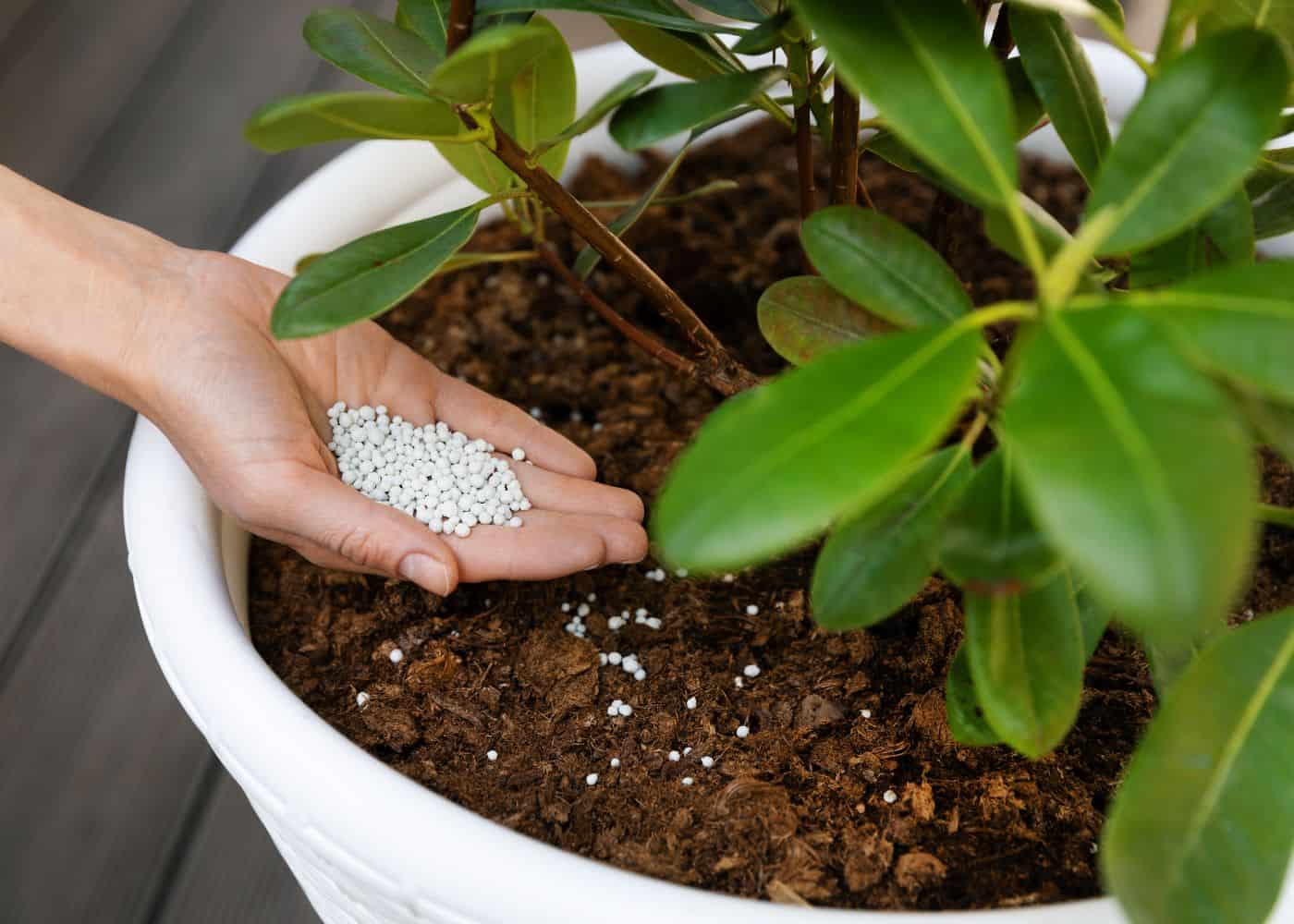
Applying NPK Fertilizers Properly
Applying an NPK fertilizer correctly is essential for achieving optimal results in your garden. To determine the amount and type of fertilizer needed, it is important to identify the soil composition. For example, sandy soils require less nitrogen than clay-based soils.
Once you’ve determined the right type of fertilizer for your soil, it’s time to apply it properly. Follow the instructions on your chosen product, as each product has different application instructions.
It’s also important to consider when applying NPK fertilizers – timing can make all the difference. Generally speaking, most plants need more nutrients during their active growth periods (spring and summer). Avoid applying too late in the fall, as this can encourage new growth that won’t survive winter temperatures. Additionally, if possible, avoid applying on hot days, as intense heat may cause some nutrients to evaporate before they are absorbed by plants’ roots.
Another key factor in the successful application is dosage – too much can burn delicate foliage or leach away from root systems where they are needed most. Read labels carefully and follow instructions closely when determining how much product should be used per square foot/meter/etc., depending on what type of fertilizer you’re using (granular vs liquid).
Troubleshooting common issues with NPK fertilizers
However, there are some common issues that can arise when using this type of fertilizer. Here are some tips to help you maximize the effectiveness of your NPK fertilizer.
First, it’s important to understand what kind of fertilizer you have. Organic fertilizers contain nitrogen, phosphorus, and potassium (NPK) but may also include other minerals like magnesium or calcium. Synthetic fertilizers usually only contain three primary nutrients: nitrogen, phosphorus, and potassium (although they may specify other additives).
Another issue with using an NPK fertilizer is understanding which numbers on the label represent which nutrient – typically, nitrogen will be listed first, followed by phosphorus, then potassium (N-P-K). Make sure you know what number represents which nutrient before applying so that you don’t apply too much or too little. Also, check if any additional nutrients, such as iron or zinc, are included in the mix, as these can affect plant growth differently than just N-P-K alone.
Periodically conducting soil tests throughout the season is essential to determine precisely how much of each major nutrient needs replenishing, as different plants necessitate various levels depending on their stage in the life cycle. Overdoing it with fertilizers can lead to soil toxicity buildup over time due to surplus plant food particles, so be sure that whatever formula you select has a higher number for whatever you’re growing.


